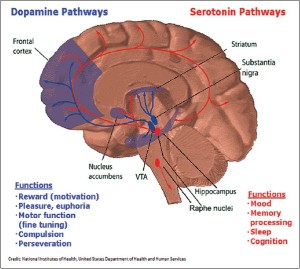 Breath is life. Without breath, life will not carry on for long. But somehow, I think, most people take it for granted. Breathing is autonomic – you do not have to think about it for it to happen. It just does. Every yogi is aware that the breath will flow unimpeded regardless of the attention or inattention given to it; yet the great Yogananda warned that every novice meditator would sooner or later interrupt their meditation for fear that their slowed breathing was their body forgetting to do so. Breath in life, however, will never stop on its own; it is the first thing we do upon entering the world (gasp in the first breath) and the very last thing we do before passing on to the next (exhale the last breath).
Breath is life. Without breath, life will not carry on for long. But somehow, I think, most people take it for granted. Breathing is autonomic – you do not have to think about it for it to happen. It just does. Every yogi is aware that the breath will flow unimpeded regardless of the attention or inattention given to it; yet the great Yogananda warned that every novice meditator would sooner or later interrupt their meditation for fear that their slowed breathing was their body forgetting to do so. Breath in life, however, will never stop on its own; it is the first thing we do upon entering the world (gasp in the first breath) and the very last thing we do before passing on to the next (exhale the last breath).
The breath is so important to life that yogis conceptualized it as the prime mover of the life force energy throughout the body – what they call prana. And both yogic teachers and modern science understand the breath’s intimacy to our consciousness states. When operating in the autopilot state of mindlessness, especially while under heavy stress, the breathing can often be shallow, rapid, and erratic. During states of deep sleep or meditation, however, the breath can slow to a crawl. Listening to a regular pranayama practitioner breathe might conjure up images of waves crashing on the shore – long, deep, and rhythmic sounds of the ebb and flow of nature.
Breathing reflects consciousness and we can affect or influence consciousness by changing our breath…breath and consciousness are just the flip sides of the same coin. ~ Richard Rosen
The function of the breath is to bring in oxygen needed for energy production, and to remove CO2, the byproduct of cellular respiration. The breath thus acts as cyclic transporter of gasses necessary for both human and vegetative life on the planet. Breath is life in every sense of the word.
With this in mind, I believe, it is of utmost importance to focus on the breath in as many of your activities as possible. Yes, of course, as a means of entering deep states of meditation, focusing on the breath is without rival. I have been teaching this vital and fundamental element of meditation weekly for eight years and, always, I emphasize the importance of focusing on the breath. It is this cycle of breath – the inspiration of life, and the expiration of death, with the spaces in between them – that allows for the deepest submergence into the great meditative state of dhyana, and ultimately, samadhi.
I focus intently on my breath whenever I must sit for something unnerving or potentially painful, like a medical or dental procedure. Because of my commitment to bringing solitary focus to my breath and ultimately release all focus as I let my consciousness dive deeply into the meditative state, I have been able to slow my breath to such a degree that dentists, doctors and nurses frequently check in with me to make sure I am still alive. One nurse just prior to my last colonoscopy told me I was not “breathing enough,” to which I jovially disclosed that I am a regular meditator and purposefully controlling my breath. The anesthesiologist who was monitoring my breathing caught the conversation and essentially told the nurse to put a lid on it – he could see my respiratory rate was normal.
Breath control has also helped me maintain my poise under stressful situations, like while in a court of law, or when under the control of some power-tripping authority (DMV employee, police officer, and so on). Deep breathing really does help calm the nerves and keep one poised under stressful situations. That alone is worth practicing breath control.
 But perhaps my favorite time to focus on the breath is during exercise. Anybody who works out regularly knows how important breath control is, but I must stress that the breath it truly is the foundation of all power and endurance in sports and fitness. Take professional fighting for example: I always know which fighter is going down first…it’s usually the one who is breathing the heaviest. When an athlete loses breath control, he loses power, and ultimately, he’ll lose the contest.
But perhaps my favorite time to focus on the breath is during exercise. Anybody who works out regularly knows how important breath control is, but I must stress that the breath it truly is the foundation of all power and endurance in sports and fitness. Take professional fighting for example: I always know which fighter is going down first…it’s usually the one who is breathing the heaviest. When an athlete loses breath control, he loses power, and ultimately, he’ll lose the contest.
When I do cardiovascular exercise – like riding a bike – I always attempt to maintain the most deep, rhythmic breathing possible. Not only does it guarantee I will finish my workout (reach my numbers), but it also allows me to pace myself, and kick on the power where I need it. When you find yourself tiring in your workout, focus on your breath – slow it down, build a rhythm – and watch your energy go up and your endurance expand. When lifting weights, focus more on the breath than on the contraction and, believe me, you will see your strength explode by controlling your breathing.
Finally, take time every week to practice diaphragmatic breathing. If you do not know how to do this powerful breathing exercise, please look here for instruction. You may not believe me when I say that people forget how to breath properly, neurologically, and it is of utmost importance to practice in the same way you would practice focused awareness (mindfulness) and meditation. I have seen over a twenty-two-year span of natural bodywork and healthcare how quickly people lose their ability to breath diaphragmatically. It is like working out – use it or lose it – to be totally cliché. But take my assurances: you will increase your power, physically and magnetically, if you take the time to work on controlled breathing.
 Breath is life, indeed. You can let it happen automatically without ever thinking about it, and your body-mind will certainly do its job dutifully. Or, instead, if you apply your mind and actions to your breathing consciously, you will become a psychic and energetic powerhouse. You will look vibrant and healthy from the maximized oxygenation of your body. You will become metabolically efficient by conditioning your gas transport and exchange system. Your mind will be clear and sharp, and you will be much quicker to drop into deep, calm, poised states of quiet meditation. Use your gift of breath to your advantage. The yogis are conceptually right with their image of life force energy control of the breath. Expand your life force for your greatest health and vibrancy through the gift of breathing.
Breath is life, indeed. You can let it happen automatically without ever thinking about it, and your body-mind will certainly do its job dutifully. Or, instead, if you apply your mind and actions to your breathing consciously, you will become a psychic and energetic powerhouse. You will look vibrant and healthy from the maximized oxygenation of your body. You will become metabolically efficient by conditioning your gas transport and exchange system. Your mind will be clear and sharp, and you will be much quicker to drop into deep, calm, poised states of quiet meditation. Use your gift of breath to your advantage. The yogis are conceptually right with their image of life force energy control of the breath. Expand your life force for your greatest health and vibrancy through the gift of breathing.








 The quest to “find” the Self can be carried out by a number of paths. One such path is meditation.
The quest to “find” the Self can be carried out by a number of paths. One such path is meditation. 















